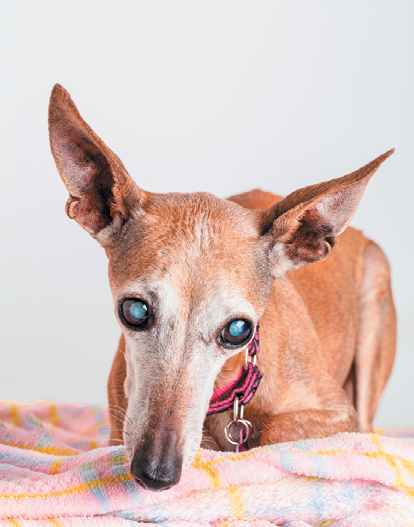Q. My 10-year-old golden doodle was recently diagnosed with diabetes after years of enjoying good health. He is now on twice daily insulin injections. But soon after his diagnosis we noticed cloudiness in his eyes, which the vet said often comes with diabetes. An internal medicine specialist on the case observed that he had only peripheral vision left, which unfortunately turned into blindness almost overnight. We have scheduled an appointment with a veterinary ophthalmologist. We have already learned through ultrasound that all organs are functioning. From your experience, generally speaking, what are the chances of getting eyesight back with surgery?
Sylvia Hill
Toronto, Ontario
A. Dear Ms. Hill,
You are describing the development of cataracts resulting from diabetes, and the scenario you relate is not unusual. It is estimated that 75 percent of dogs with diabetes go blind within a year. And it can happen extremely quickly — literally overnight, as in the case of your own pet. What happens is that the fluid that bathes the eye ends up with excess glucose (sugar). In an effort to dilute the sugar, more fluid passes into the lens. It’s this process that causes the eyes to become cloudy with cataract formation. The lenses become thicker and denser.
Cataract surgery to replace a cloudy lens with a clear plastic or acrylic one is successful significantly more often than not, especially if the components of the eye other than the lens are still in good shape. The ophthalmologist will check the functioning of the retina, for instance. The fact that your dog’s other organ systems look healthy on ultrasound is a promising sign.
You’re smart to get on it. A cataract that remains untreated can end up slipping out of place and floating around the eye. If it lodges in the wrong place, it can block fluid drainage and lead to glaucoma — a cause of blindness by itself in addition to being very painful.





